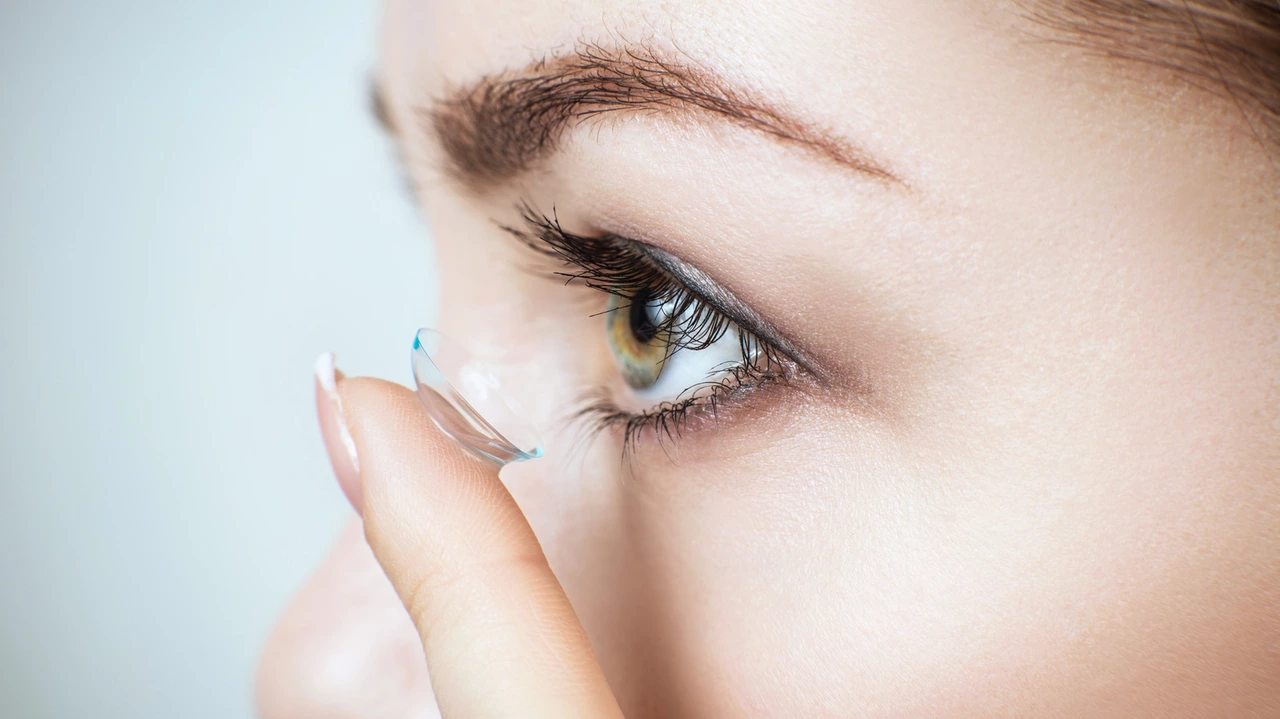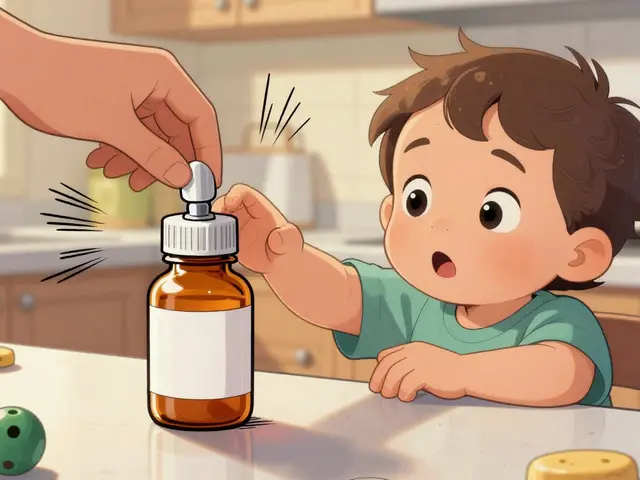
Understanding Allergic Conjunctivitis: Causes and Symptoms
As a contact lens wearer, I've had my fair share of eye irritation. One of the most common causes of this discomfort is allergic conjunctivitis. Allergic conjunctivitis occurs when the clear layer covering the white part of our eyes, called the conjunctiva, becomes inflamed due to an allergic reaction. Common allergens include pollen, dust mites, pet dander, and certain ingredients in eye makeup or contact lens solutions.
The symptoms of allergic conjunctivitis can range from mild to severe, and typically include itching, redness, tearing, and a burning sensation in the eyes. It can also cause swollen eyelids and sensitivity to light. If you're experiencing any of these symptoms, it's essential to consult with an eye care professional for a proper diagnosis and treatment plan.
Choosing the Right Contact Lenses for Allergy Sufferers
I know from experience that not all contact lenses are created equal, especially when it comes to managing eye allergies. Some types of contact lenses can exacerbate the symptoms of allergic conjunctivitis, while others can help minimize discomfort. For instance, daily disposable contact lenses are a great option for those with allergies, as they can be thrown away at the end of the day, reducing the risk of allergen buildup.
Gas permeable lenses, on the other hand, can be more difficult to clean and may trap allergens on their surfaces, making them a less ideal choice for allergy sufferers. It's important to discuss your specific needs with an eye care professional so they can recommend the best type of contact lenses for you.
Maintaining Proper Lens Hygiene
Keeping your contact lenses clean is crucial in managing allergic conjunctivitis symptoms. Even if you're wearing daily disposables, it's still essential to clean your hands thoroughly with soap and water before handling your lenses. This helps to prevent any allergens from being transferred to your eyes.
For those using reusable contact lenses, it's important to clean and disinfect them regularly with a contact lens solution recommended by your eye care professional. This can help to remove any allergens that might have accumulated on the lens surface throughout the day. Additionally, make sure to replace your contact lens case every three months to prevent bacterial growth.
Switching to Preservative-Free Solutions
Some contact lens wearers, including myself, are sensitive to the preservatives found in certain lens cleaning solutions. These preservatives can cause or worsen allergic conjunctivitis symptoms. If you suspect that your contact lens solution might be contributing to your eye irritation, consider switching to a preservative-free option.
Preservative-free solutions are specially formulated for those with sensitive eyes and can be found in most pharmacies and online retailers. Your eye care professional can also provide recommendations on the best preservative-free solutions for your specific needs.
Wearing Glasses When Symptoms Flare Up
As much as I love the convenience of contact lenses, there are times when it's best to give my eyes a break and switch to glasses. Wearing glasses instead of contacts during allergy season or when experiencing a flare-up of allergic conjunctivitis can help alleviate symptoms and prevent further irritation.
This is because glasses create a physical barrier between your eyes and allergens, reducing the chance of direct contact. Additionally, giving your eyes a break from contact lenses allows them to heal and recover more quickly from any inflammation or irritation.
Considering Allergy Medications and Eye Drops
When dealing with allergic conjunctivitis, it's not uncommon for eye care professionals to recommend over-the-counter or prescription allergy medications, such as antihistamines, to help manage symptoms. These medications can help reduce itching, redness, and swelling associated with eye allergies.
Additionally, lubricating eye drops, also known as artificial tears, can be used to provide relief from dryness and discomfort. Be sure to consult with your eye care professional before using any new medications or eye drops to ensure they are safe to use with your contact lenses.
Controlling Allergens in Your Environment
While it's impossible to completely avoid allergens, there are steps you can take to minimize your exposure and reduce the likelihood of allergic conjunctivitis symptoms. For example, keeping your home clean and dust-free, using an air purifier, and washing your bedding regularly can help keep allergens at bay.
Additionally, try to avoid rubbing your eyes, as this can introduce allergens and cause further irritation. Instead, use a clean tissue to gently remove any debris or tears from the eye area.
When to Seek Professional Help
If your allergic conjunctivitis symptoms persist despite your best efforts to manage them, or if they worsen over time, it's important to consult with an eye care professional. They can assess your condition, provide a proper diagnosis, and recommend appropriate treatment options to help alleviate your discomfort.
Remember, your eyes are precious, and taking care of them should be a top priority. By following these tips and staying in close communication with your eye care professional, you can continue to enjoy the benefits of contact lenses while minimizing the impact of allergic conjunctivitis on your daily life.
20 Comments
Kathy Butterfield
May 28, 2023 at 09:03 AM
Totally get how annoying allergies can be 😑. Daily disposables are a lifesaver when pollen is doing its thing 🌸. Just make sure you wash your hands before you pop them in! 👍
Zane Nelson
May 28, 2023 at 20:10 PM
While the author has articulated the basic preventive measures, it is imperative to underscore that the selection of contact lens substrate ought to be predicated upon a rigorous assessment of its oxygen permeability coefficient, as suboptimal Dk/t values may exacerbate ocular surface inflammation in sensitized individuals. Additionally, the recommendation to replace lens cases every three months, though pragmatic, fails to consider the potential for biofilm formation within the case’s microenvironment, which warrants a more frequent replacement schedule in the context of allergic pathology. The omission of a discussion on the role of tear osmolarity further diminishes the comprehensiveness of the guide.
Sahithi Bhasyam
May 29, 2023 at 07:17 AM
Hey there!!! I love how you covered the basics!! :) But, uh, have you ever tried using a hypoallergenic lens solution?? It can really help!!! Also, don't forget to clean your hands!! Even a tiny speck of pollen can cause a big reation!!! ;)
mike putty
May 29, 2023 at 18:23 PM
It’s great that you’re taking such proactive steps to manage eye allergies, and the tips you shared are both practical and easy to incorporate into daily routines. Keeping a consistent lens hygiene schedule can truly make a difference, and pairing that with occasional breaks to wear glasses will give your eyes the rest they deserve.
Kayla Reeves
May 30, 2023 at 05:30 AM
Honestly, people who ignore the importance of preservative‑free solutions are putting their vision at unnecessary risk, and it’s disappointing to see such disregard for proper ocular health in everyday discussions.
Abhinanda Mallick
May 30, 2023 at 16:37 PM
One must recognize that many of the lens manufacturers pushing harmful additives are driven by profit motives that ignore the well‑being of consumers, and it’s high time we demand stricter regulations to protect our eyes from corporate negligence.
Richard Wieland
May 31, 2023 at 03:43 AM
Balancing lens hygiene with environmental controls creates a holistic approach to reducing allergic conjunctivitis symptoms.
rachel mamuad
May 31, 2023 at 14:50 PM
From a bio‑engineering standpoint, the interplay between lens oxygen transmissibility (Dk/t) and tear film stability is a critical parameter, especially when considering immuno‑modulatory pathways that can be triggered by allergen deposition on lens surfaces. Proper case hygiene mitigates biofilm formation, which otherwise could serve as a nidus for pro‑inflammatory cytokine release.
Amanda Anderson
June 1, 2023 at 01:57 AM
Wow, eye allergies can really ruin a day, but switching to daily disposables feels like a rescue mission for my eyes! The relief is almost cinematic, and my vision finally gets the happy ending it deserves.
Carys Jones
June 1, 2023 at 13:03 PM
While your exhaustive breakdown is impressive, it borders on the obsessive-people don’t need a PhD in ocular immunology to keep their eyes comfortable, and encouraging such over‑analysis can fuel needless anxiety.
Roxanne Porter
June 2, 2023 at 00:10 AM
Indeed, incorporating emojis adds a friendly touch, yet it’s essential to maintain clarity in instructions so that all readers, regardless of familiarity with visual cues, can follow the hygiene steps effectively.
Jonathan Mbulakey
June 2, 2023 at 11:17 AM
Reflecting on the material properties of lenses reminds us that even seemingly inert objects participate in a larger ecological system, influencing not just ocular health but also our interaction with the surrounding environment.
Warren Neufeld
June 2, 2023 at 22:23 PM
Your enthusiasm for hypoallergenic solutions is appreciated, and it’s true that frequent hand washing paired with diligent case replacement can substantially lower allergen load on the lens surface.
Deborah Escobedo
June 3, 2023 at 09:30 AM
Consider adding a short daily rinse with sterile saline after removing the lenses; this extra step helps flush residual pollen and can further reduce irritation without complicating the routine.
Dipankar Kumar Mitra
June 3, 2023 at 20:37 PM
To truly honor the sanctity of our vision, we must reject complacency and demand that every ophthalmic product be transparent about its preservative content, lest we surrender our ocular autonomy to unchecked chemical agents.
Tracy Daniels
June 4, 2023 at 07:43 AM
Great point about corporate responsibility 😊. I’d suggest reviewing the FDA’s list of approved lens materials and choosing brands that disclose full ingredient profiles to ensure you’re not exposing yourself to hidden irritants.
Hoyt Dawes
June 4, 2023 at 18:50 PM
Sure, “holistic approach” sounds fancy, but in the end it’s just another buzzword that people throw around without actually doing anything useful.
Jeff Ceo
June 5, 2023 at 05:57 AM
Your technical explanation is thorough, but let’s keep the conversation focused on actionable tips rather than diving too deep into biochemistry.
David Bui
June 5, 2023 at 17:03 PM
Honestly, the “cinematic” phrasing is a bit over the top – just say the lenses work and stop trying to dramatize a simple allergy fix.






Faye Bormann
May 27, 2023 at 21:57 PM
First of all, I have to say that while most people chalk up eye irritation to simple allergies, the reality is far more nuanced, and I love diving into those nuances because they often get swept under the rug. The literature suggests that contact lens materials can actually modulate the immune response of the conjunctiva, which means that not every daily disposable will behave the same way for every allergic individual. Moreover, the tear film dynamics change dramatically when you swap from a silicone hydrogel to a conventional hydrogel, and that shift can either amplify or dampen histamine release. It’s also worth mentioning that many over‑the‑counter antihistamine drops contain preservatives that themselves act as irritants, creating a vicious cycle that most wearers never realize they’re trapped in. When you think about the role of ambient pollutants, especially in urban environments, you have to consider that particulate matter can adhere to the lens surface despite rigorous cleaning regimes, acting like a slow‑release allergen. In my own experience, I switched to a preservative‑free solution and added a brief nightly soak in sterile saline, which cut my redness by half within a week. Another overlooked factor is the microbiome of the lens case; a colonized case can release endotoxins that sensitise the ocular surface over time. If you’re still battling itching after a season of diligent hygiene, you might want to explore allergen‑blocking contact lenses that incorporate steric‑hindering molecules on their surface. And don’t forget the power of systemic antihistamines; they can lower overall inflammatory tone, making the eyes more tolerant of any residual allergens. Finally, schedule regular check‑ups with an optometrist who can perform a tear breakup time test, because a compromised tear film is a silent accomplice in allergic conjunctivitis. All in all, the key is a multi‑pronged approach that combines the right lens material, optimal hygiene, and appropriate pharmacologic support, rather than relying on a single fix. So, while the post gives solid basics, remember that individual variability means what works for one person might be ineffective for another, and that’s why personalized care is essential. Consider rotating your lens type seasonally to give your eyes a break, and keep a symptom diary to track which environments trigger flare‑ups. This systematic strategy will empower you to make data‑driven decisions and stay comfortable all year round. Remember, consistency is more important than occasional perfect hygiene, as the ocular surface responds to cumulative exposure.